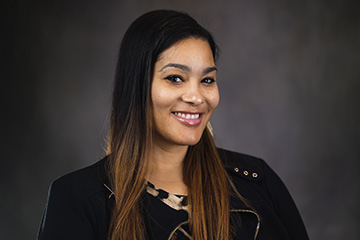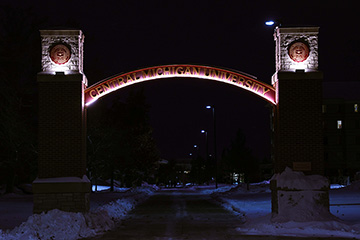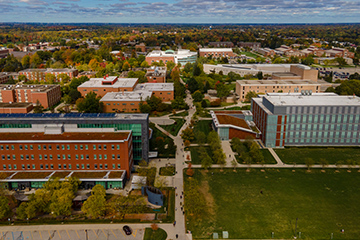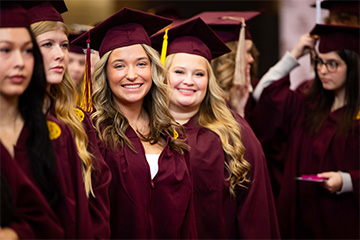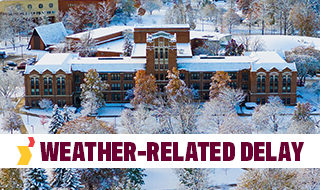Introducing the School of Communication, Journalism and Media
New structure emphasizes career readiness, hands-on learning
To prepare students for careers in rapidly changing professions, several academic departments at Central Michigan University have come together to form the new School of Communication, Journalism and Media.
Jefferson Campbell, dean of the College of the Arts and Media, said faculty have been working on the structure for the new school since it was approved by the CMU Board of Trustees during a formal meeting in December 2022. Now, after many months of work, the school has a new web presence, a new director and a new vision to prepare students for great careers after graduation.
Rapid changes drove the new structure
Campbell said the professional fields of journalism, broadcasting, communication and media have changed dramatically over the past decade, impacting the way people and communities look for and engage with information and one another.
“We were looking for a solution that would allow faculty and students to better adapt and keep pace with changes, and to ensure students are prepared for the professions as they are now and how they will be in the future,” he said.
Campbell said conversations with alumni also played an important role in shaping the new school.
“We heard not only about their experiences at CMU, but also what demands the workforce is placing on applicants,” he said. “We set out to restructure our units to best address the needs of students as they prepare for 21st century careers.”
Programs reimagined
As part of the new school structure, two areas are also changing their names to better reflect the professions they serve.
Broadcast and Cinematic Arts is becoming Media Arts, a name which more accurately encompasses the wide variety of courses and cocurricular activities offered. Students in the program have opportunities to build their professional and technical skills through activities such as Moore Hall TV, which produces News Central and Central View Live; two FCC-licensed FM radio stations, 101.1 The Beat and Mountain 91.5; Moore Media Records, which records and produces local music; and the CMU Film Society.
The new area of Strategic Communication brings together faculty expertise from the areas of Integrative Public Relations, Public Relations and Advertising. Students in these programs also have opportunities to participate in hands-on learning through programs like PR Central, the student-run on-campus PR firm, and the university chapter of the Public Relations Student Society of America.
Media Arts and Strategic Communication will join Communication and Journalism, including Photojournalism, to create the new school. The new structure also will include focus on graduate studies in Communication and Media Arts, as well as experiential learning opportunities and internships.
Students also have opportunities for hands-on learning through student media outlets including Grand Central magazine and CM Life.
New leadership, new vision
Campbell announced that, effective July 1, Heather Polinsky would serve as the new director for the School of Communication, Media and Journalism. Polinsky, professor and former director of the Broadcast and Cinematic Arts program, has a long record of effective and enthusiastic leadership at CMU, Campbell said. Area coordinators also have been appointed and will begin their responsibilities in August 2023.
The increased collaboration and partnership within the School will drive better outcomes for students and allow greater visibility for some of the exciting opportunities available to them, Campbell said. He noted that CMU is now an FAA-licensed drone training and certification site, and drone technology can be incorporated into curriculum in several program areas. In addition, the school has launched a new certificate in social media, which helps students build knowledge and skills related to analytics and content creation and distribution.
“These examples are only the very beginning of what we can accomplish by working together in this new structure,” Campbell said.
Nothing lost, much to be gained
Campbell said no degrees or courses have been cancelled, and no faculty lines were lost due to the reorganization. Instead, the faculty within the programs have begun to develop ideas for new courses within the school and to find new ways to work collaboratively across disciplines.
“This was actually a strategic move on the part of the faculty and the college to provide greater flexibility in faculty assignments, share resources across disciplines, and most importantly, drive innovative thinking,” he said. “They are thinking about how each of the disciplines can pursue new courses, course changes and new programs that will utilize discipline-specific strengths to provide students with the depth and breadth of education and experience needed to prepare for their careers.”
